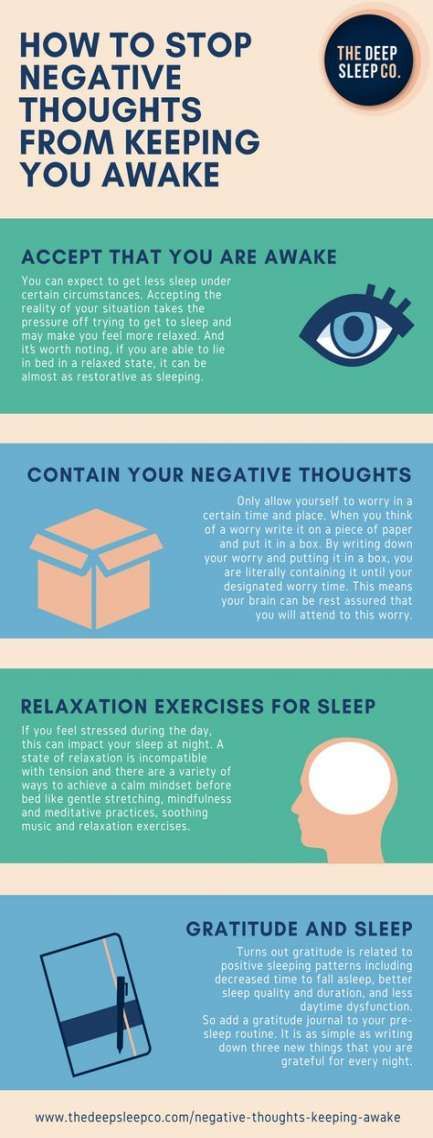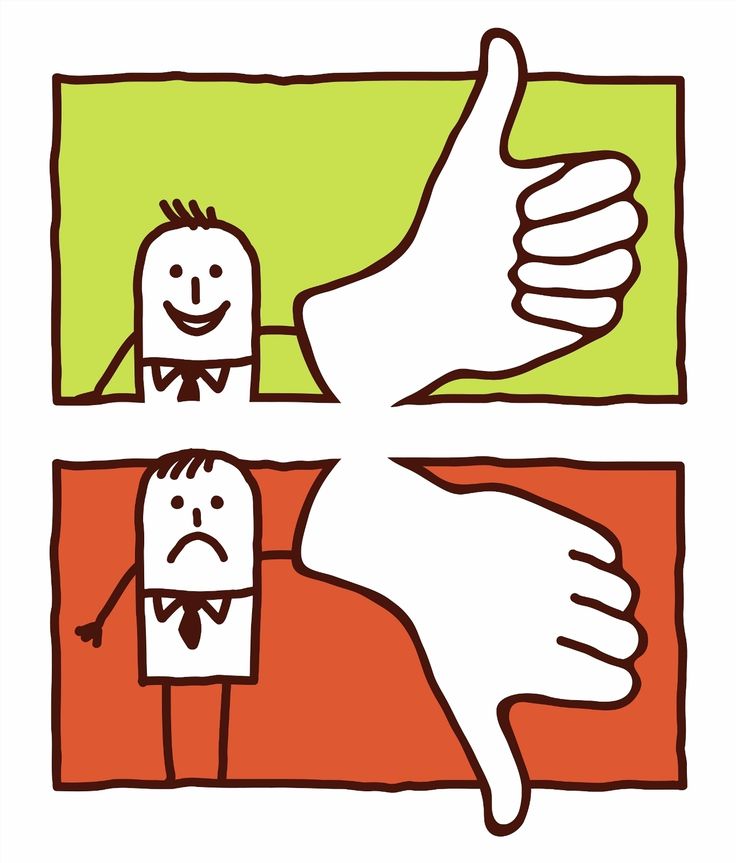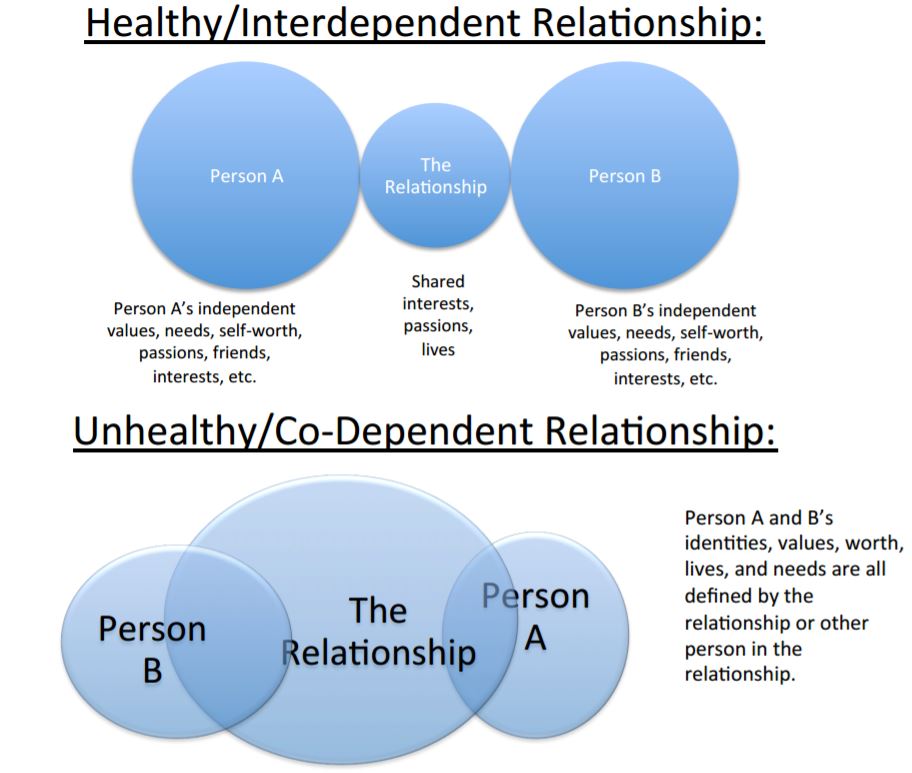Stop the negativity
9 Ways to Stop Being Negative
The latest neuroscience suggests we can change our brains by transforming our minds and behavior. Specific mental exercises, when practiced systematically over time, can lead to enduring changes in the structure and function of our brains and, as a result, alter different facets of our Emotional Style.
Center Founder Richard Davidson shares nine ways to stop being negative, whether it's noticing the good in ourselves and others or noticing our environment and emotions.
1. Notice the Good
Write down one positive characteristic of yourself and one positive characteristic of someone you regularly interact with. Do this three times a day. Ideally, you'll write down a different trait each time, but if you're stuck on how "helpful" your office colleague is, that's okay.
2. Express Gratitude Regularly
Pay attention to times you say "thank you." When you do, look directly into the eyes of the person you are thanking and muster as much genuine gratitude as you can. Keep a journal and, at the end of each day, note the specific times you felt a genuine, even if brief, connection with another person during the act of expressing gratitude.
3. Compliment Other People Regularly
Keep an eye out for opportunities to do so, such as a job well done at work, a beautiful garden a neighbor created, or even a stranger's gorgeous coat. Look directly into the eyes of the person you are complimenting. In your journal, note the specific times you felt a genuine connection with someone you complimented.
4. Notice Your Breath
Mindfulness can weaken the chain of associations that keep us obsessing about and even wallowing in a setback, and can produce emotional balance. Mindfulness of breathing is an excellent place to start, since it is easy to focus on your breath during daily activities and it provides a clear anchor or support for mindfulness. The basic idea is to sit in a chair, relaxed but sitting up straight, and focus on your breathing: notice the sensations it triggers throughout your body, such as your abdomen moving in and out or the air passing the tip of your nose. If you notice that you have become distracted, simply return your focus to your breathing. Try this 5 to 10 minutes a day, ideally twice a day.
If you notice that you have become distracted, simply return your focus to your breathing. Try this 5 to 10 minutes a day, ideally twice a day.
5. Cultivate Compassion
Practice simple compassion meditation, which can help you be less negative. It can provide perspective by reminding you that others suffer, too, and by focusing on relieving suffering in others you may well experience a sense of spontaneous joy. The basics of compassion meditation are to visualize someone who is suffering (a relative, friend or a generic person such as a starving child) and, each time you inhale, imagine that you are taking in that person's suffering. Imagine the person's pain flowing from your airways into your lungs, and conjure an image of his or her anguish departing her body.
6. Bounce Back from Challenges
Try re-arranging your environment to speed recovery from adversity. Leave the situation where a setback occurred: if you had a fight with your spouse, leave the combat zone and walk outside, or at least into another room.
7. Work with Negative Emotions
To decrease negative emotions, try a variant of "exposure therapy," which consists of progressively more direct exposure to cues that produce negative emotions but in a safe context and when you are relaxing. (You can use breathing exercises from hatha yoga to help you relax.) Then make a list of specific cues and behaviors that make you upset or produce negative emotions in a specific context. Then in a safe context, such as your home when you are relaxing on a weekend, gently and gradually bring to mind images associated with the events that produce negative emotions. Conjure up these images as vividly as possible. While imagining these events, perform the breathing exercise to help you relax. Continue to practice the breathing exercise until you feel comfortable and at ease despite imagining these negative events. Spend about 15 minutes several times per week on this.
8. Practice Mindfulness of the Body
This form of mindfulness meditation strengthens your awareness of sensations and trains you to observe them non-judgmentally. This component is important because when we judge our bodies as too tense we often add insult to injury and heap one negative emotion ("There must be something wrong with me if I can't relax!") on another. Mindfulness of the body can help break this negative chain of associations by training you to feel greater equanimity when observing your bodily signals of emotion and thereby reduce your negative emotions. To practice mindfulness of the body, sit upright and slowly move your attention systematically around your body, noticing the specific sensation in each such as tingling or pressure. Try this for 5 to 10 minutes, twice a day.
This component is important because when we judge our bodies as too tense we often add insult to injury and heap one negative emotion ("There must be something wrong with me if I can't relax!") on another. Mindfulness of the body can help break this negative chain of associations by training you to feel greater equanimity when observing your bodily signals of emotion and thereby reduce your negative emotions. To practice mindfulness of the body, sit upright and slowly move your attention systematically around your body, noticing the specific sensation in each such as tingling or pressure. Try this for 5 to 10 minutes, twice a day.
9. Explore Our Common Tendency to Be Happy and Avoid Suffering
Notice that many of our actions and those of others are intended to relieve suffering or bring happiness. (When you encounter a painful stimulus, you withdraw from it.) Recognizing that this is basic to all human beings provides a deep sense of interconnection with those around you and cultivates an appreciation that we all wish to be happy and to relieve suffering. Try becoming aware of this any time you feel displeasure or pain. Notice your natural tendency to move toward happiness and well-being. And remind yourself that everyone is built the same way.
Try becoming aware of this any time you feel displeasure or pain. Notice your natural tendency to move toward happiness and well-being. And remind yourself that everyone is built the same way.
7 Ways to Shift a Negative Outlook
“Negative” thoughts can feel defeating — but various strategies can help you overcome them.
When life feels overwhelming, you may wonder when you will catch a break. You’ve tried practicing gratitude, but nothing seems to take away the difficult feelings and thoughts.
Everyone has challenging thoughts every once in a while. But when you start to see the negative in everything, it can lead to mental health problems, leave you feeling bad about yourself, or make you feel hopeless.
You don’t have to keep living with this mindset. Several techniques can help you look at life through rosier-colored glasses.
If you’re stuck in a cycle of challenging thoughts and patterns of rumination, practicing mindfulness can help. Mindfulness is intentional awareness and acceptance of the present moment.
A 2019 study found that mindfulness practice, as stand-alone or enhanced through meditation, helped reduce symptoms of depression and anxiety, like worry and rumination.
There are many ways to practice. Consider pausing and taking in your surroundings with three different senses or focusing on what’s happening in the present moment. You may want to set aside time for a regular meditation habit.
Cognitive distortions are patterns of irrational thinking. If you can recognize and become aware of cognitive distortions, you can use methods to challenge your thinking patterns.
Some cognitive distortions to look out for include:
- All-or-nothing thinking: thinking in absolutes, even when an overall situation is both good and challenging.
- Overgeneralization: taking one isolated situation or experience and applying that conclusion to unrelated situations.
- Mind-reading: the false belief that you know what other people are thinking.

- Catastrophizing: thinking of everything in terms of worst-case scenarios, also called catastrophic thinking.
- Minimization: discounting your accomplishments as if they are unimportant.
- Fortune-telling: coming to a conclusion with very little or no supporting evidence.
- Personalization: blaming yourself for situations and events that you have little control over.
Awareness of your biases can help you challenge irrational beliefs and shift them to more realistic ones.
If you can find a way to laugh at yourself during life’s challenging events, you’re using self-enhancing humor. It’s about finding the humor in the absurdities of life without being critical of yourself.
Research from 2016 indicates that using self-enhancing humor as a coping mechanism has a beneficial effect on cognitive distortions.
If you can laugh and have a positive outlook on life, you may be less prone to falling into challenging thinking patterns that can leave you feeling trapped.
Thought-stopping is a technique that is used often in cognitive behavioral therapy (CBT) to help prevent snowballing thoughts.
You can practice thought-stopping next time you have unwanted thoughts by saying the word “stop” aloud and thinking of an image that signals you to stop (e.g., a stop sign or a stoplight).
You then say the word “calm” out loud and pair that word with an image that reminds you of a peaceful place (e.g., the beach, the mountains, a lake). During this step, it can be helpful to tune into your five senses when imagining your peaceful place.
This technique aims to help stop thoughts from escalating and cycling. As with any method, it gets easier the more you practice it.
Positive affirmations are a great way to help you shift challenging beliefs into positive ones. Positive affirmations can help with self-confidence and reset your attitude about yourself.
Examples of positive affirmations:
- I am worthy of love.
- I am deserving of peace.

- I am strong.
- I love myself.
- Negative experiences do not define me.
You can practice these by stating them to yourself every day. Consider posting affirmations where you’ll see them often, like on a noticeboard or your phone background.
Research from 2016 suggests that positive self-affirmations help train your brain to be more resilient to challenging thoughts and regulating emotions.
One effective method of self-affirmation is spending time thinking about your past successes. You might even want to brainstorm and write out your wins.
One way to stand up to challenging thinking patterns is by putting your thoughts on a trial. You act as a jury examining your idea, which might be a cognitive distortion.
You ask yourself questions such as:
- What evidence do I have to support this thought?
- What evidence do I have against this thought?
- Are there any other possible alternative explanations for this thought?
- What do I think the verdict would be now that I have examined this thought?
Although challenging these thoughts doesn’t always remove the emotions associated with the thought, they can help you gain a more realistic view of a situation.
Practicing acceptance without judging “negative” emotions or thoughts can be a way of coping.
Rather than seeking to change these thoughts, acceptance helps you deal with things as they are in the present moment. Acceptance does not mean approval — it just means you allow yourself to deal with a situation for what it is.
Research from 2018 indicates that self-acceptance has been linked with greater mental health. The results of this study suggest that accepting mental experiences rather than judging them may occur due to experiencing fewer challenging emotions due to your stressors.
Several research-backed techniques can help you shift your outlook if you have challenging thoughts.
We all have difficult thoughts, so you aren’t alone in dealing with them. You can also seek out the support of a mental health professional to assist you.
Consider tapping into Psych Central’s How to Find Mental Health Support resource to find a therapist near you.
If you are experiencing suicidal thoughts, you can use The National Suicide Prevention Lifeline. Call the Lifeline at 800-273-8255 for English or 888-628-9454 for Spanish, 24 hours a day, 7 days a week.
Call the Lifeline at 800-273-8255 for English or 888-628-9454 for Spanish, 24 hours a day, 7 days a week.
7 ways not to drown in negativity
February 13, 2021 Life
Take a fresh look at the situation, take a walk or do some creative work to ease the suffering.
Iya Zorina
Author of Lifehacker, athlete, CCM
You can not only read this article, but also listen to it. If it's more convenient for you, turn on the podcast.
1. Change your body language
Pay attention to your body when you are overwhelmed by negative emotions. Look at your face: the corners of your mouth are lowered, your forehead is furrowed. How do you keep your back? Are you slouching?
If you have a hotbed of negative thoughts in your head, your body behaves accordingly. And when such thoughts become constant, it gets used to such a situation. You have probably seen people with a mask of contempt or anger on their face, which persists in any situation.
This also works in the opposite direction: a tight body position and a frowning face do not create a good mood. So your first step in getting rid of bad thoughts is to change your posture and facial expressions. Straighten your back and straighten your shoulders. Feel where tension has accumulated in your body, and relax, smile. Within a few moments you will feel that the emotional background is changing.
2. Discuss your feelings
Some people talk about their problems to everyone and even savor it. Others keep everything in themselves to the last, and then get a nervous breakdown.
If you still have some negative emotions that do not go away, try to tell your loved ones about it. By putting your annoyance into words, you give shape to your emotions and put them in the right perspective. After the conversation, you will be surprised how stupid it was to worry about the voiced occasion, and the negative will disappear.
3. Stop the flow of thoughts
If a thousand thoughts go through your head in one minute, it is difficult to decide something for yourself and somehow control it. If you are stuck on the negative, try not to think about anything at all for just one minute. By paying attention to what is happening in your head and what thoughts dominate there, you can change the situation.
If you are stuck on the negative, try not to think about anything at all for just one minute. By paying attention to what is happening in your head and what thoughts dominate there, you can change the situation.
4. Change the wording
It's amazing how a small change in wording changes the tone of a whole phrase or thought. Compare: "I'm going through a difficult period in my life, I have problems" and "I'm going through a period of changes in my life, I'm looking for better solutions." The underlying data hasn't changed, just the problems have been called changes. But who's to say it's not true?
5. Get creative
When negative thoughts attack you, you can spend some time getting creative. It works just like a conversation, with the exception that you don't have to annoy anyone with your problems. You can do anything: write prose or poetry, draw with a pencil or paint. Dance at last.
A splash of emotions through creativity is a kind of art therapy that will not only provide relaxation, but also cheer you up. Negative thoughts will pass through you, take shape, and stay there, not in your head.
Negative thoughts will pass through you, take shape, and stay there, not in your head.
6. Take a walk
It often seems that our own head is the only source of negativity. Most often this is the case, but it also happens differently. If you are surrounded by toxic people, such as in a family where everyone constantly fights and blames each other, or at work, where everyone is on their nerves, half of the negativity may be due to their mood.
If you are not a guru, it is unlikely that you will be able to get rid of heavy thoughts while being in such an environment. Therefore, if possible, leave it to calm down. Go out for a walk or go somewhere: to an exhibition, to your favorite cafe, to the cinema - this will help you find peace of mind.
7. Make a list of thanks
Sometimes we forget all the good things in our lives. It seems that there is no way out and a complete failure on all fronts. So, sitting in a cozy and warm apartment, having come from a favorite job, a person may think that his life is a cesspool, and he is a complete loser. And all because of the coincidence of minor troubles for the day or an unfulfilled project hanging over the soul.
And all because of the coincidence of minor troubles for the day or an unfulfilled project hanging over the soul.
To cope with this state, write down all the good things in your life, things for which you are grateful. For example: “I am grateful for my appearance and health”, “I am grateful for loving and beloved relatives”, “I am grateful for true friends”.
Look at the resulting list and see for yourself: minor annoyances cannot outweigh this.
Read also 😫
- 25 simple ways to get rid of depressive thoughts
- 7 ways to protect yourself from negativity
- How to pump up the internal dialogue, get rid of negativity and become more successful
How to stop negative emotions, thoughts and actions
When we are in a bad mood, our distorted consciousness perceives the world through the prism of eternal discontent and disappointment. The circle closes when our negative thoughts smoothly and imperceptibly flow into negative emotions, and emotions turn into destructive actions.
If this vicious circle is not broken in time, the negative consequences of your thoughts begin to affect not only your mood, but also your career, personal life and physical condition. The fact that such a condition can lead to depression and a feeling of constant anxiety.
You can stop negative emotions only when you understand what exactly causes negative thoughts and a further chain of unpleasant events. Find your triggers (impulses) - find your golden key to a good mood and in the future you will be able not only to prevent negative emotions and actions, but also to catch gray thoughts by the tail right on the way to your head.
©photo
Philip Viana, a banking financial adviser with a very busy schedule of life and work, shares his secrets to dealing with negativity.
Triggers
In psychology, the term " trigger " means any external stimulus that acts as an impulse, a trigger that triggers the corresponding emotional or physical reaction.
Thoughts, words, actions and sometimes physical reactions can trigger your negative state. One single trigger can be quite harmless, especially if you let the negativity out. For example, they beat the dishes to their heart's content or shouted well. Plate - to smithereens! Bad thoughts out! It's all over, everyone is happy and you can finally buy those new plates that you've been staring at since last year, but there was no reason to.
But… But if after you break a plate you hear something like “I can’t believe you broke my mom’s favorite cup!”, the process doesn’t end and just a bad mood can turn into anger and the cycle will begin again.
Negative thoughts are like a flame
Imagine a negative thought as a flame. In an empty concrete parking lot, such a flame would not be able to cause much harm. It is very easy to extinguish it or it will gradually burn out on its own. But if even a small flame flares up in a closed room filled with combustible and explosive materials, trouble cannot be avoided. Even if you start to extinguish it, the flame will try to gobble up as much as possible before it is extinguished. The flame will burn until there is nothing left to burn.
Even if you start to extinguish it, the flame will try to gobble up as much as possible before it is extinguished. The flame will burn until there is nothing left to burn.
The same thing happens to a person in anger. The flame of discontent inside flares up and if fuel is thrown to it, it will not stop until it burns out all other emotions inside a person and in the end only emptiness remains. I don't know if you've ever felt uncontrollable anger that bursts out and burns everything inside. You feel anger and aggression! You choke on negativity to the point of feeling physical pain in your chest. You are short of breath, you are suffocating. And when this flame breaks out, it incinerates everything - your relationships with family and friends, your emotions, your work. When the fire goes out, there is usually nothing left to burn.
An example of a negative emotional cycle
You are on your way to an important business meeting and get stuck in a traffic jam. As a result, of course, you are late. And even if you are only 20 minutes late for a meeting for a good reason, you still get stressed and you feel it even physically - waves of nausea roll over you.
And even if you are only 20 minutes late for a meeting for a good reason, you still get stressed and you feel it even physically - waves of nausea roll over you.
Thoughts arise in your head that you are constantly late, you are not doing well, your colleagues do not appreciate you, you are not able to close profitable deals, etc. Your circle is complete and you are being sucked into a swamp called "I'm a loser and no one loves me." Plus, you start to break loose on the surrounding drivers of the car, who are not to blame for anything and, just like you, turned out to be hostages of the situation.
Is there a way out? Try to calm yourself with the thought that you deliberately left early, but still got stuck in traffic. Everyone can make a mistake. And colleagues will certainly enter into your position and understand you. After all, 20 minutes is not an hour.
Recognizing triggers
In order to remain calm in any situation, you must understand what exactly is your trigger and work through them. Moreover, in different situations and for different emotions there are triggers. Add to this positive thinking, choosing the right environment and avoiding negativity, choosing a job that you really enjoy, a favorite hobby that you have enough free time for and, of course, choosing the right people around you - and you will have reliable armor.
Moreover, in different situations and for different emotions there are triggers. Add to this positive thinking, choosing the right environment and avoiding negativity, choosing a job that you really enjoy, a favorite hobby that you have enough free time for and, of course, choosing the right people around you - and you will have reliable armor.
Weakening triggers
Try to find the positive in everything and think positively. This is quite difficult, since a person is a mysterious creature, and even if everything around is perfect, we diligently do not believe in it and find negative points at least in small things. And if they are not there, then we just invent it (everything just doesn’t happen so well). Therefore, you will have to spend time learning to think positively and find positive moments even in the most unpleasant situation.
For example, instead of thinking that you are unattractive and no one likes you (even if this is true), consider that you have a loving family that looks forward to your return from work every day, loves you very much and is always glad to see you.
Try to extinguish negative thoughts as soon as they arise in your head. To get started, try to set aside at least 5 minutes every day to make a list of all the good things that you managed to do today, your positive qualities, things and people that make you happy.
Breaking the cycle and pattern
Sometimes it happens that you are unable to recognize the impulse that triggers your negative emotions. For example, you went to bed in a good mood, and woke up with beeches. In this case, instead of following the usual “wake up, had coffee, read the newspaper” schedule, it is better to interrupt this standard cycle and do something else. For example, take a soothing or invigorating (depending on the situation) shower. The shower calms and washes away negative emotions. You can imagine how all your anxieties and bad thoughts go away with water. Relax, tune in to a productive and positive day
Avoid negative economic and political news early in the morning. Leave the house early so that you can get to work in a stress-free, leisurely way and still have time for a cup of coffee.













